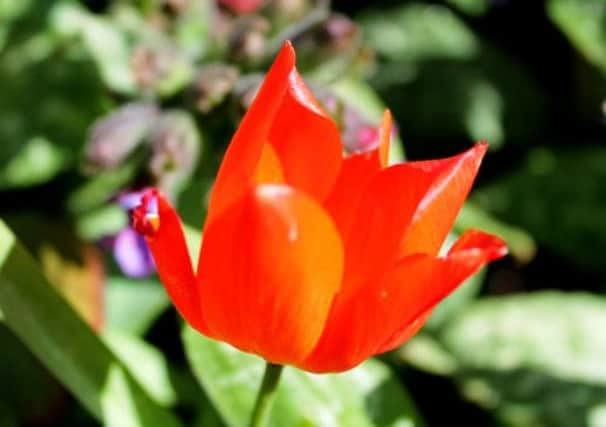A time for action not words


So while budding Keatses slave with words in a garret, gardeners can get outdoors and remove all the dead and decaying summer flowers from beds and borders and plant up spring bulbs and winter-flowering bedding.
The soil should be still be warm and moist enough to encourage new rot growth, giving plants a much better chance of surviving and thriving than if you planted them out into the cold soil of November.
Advertisement
Hide AdAdvertisement
Hide AdAnd all the summer-bedding rubbish you remove won’t go to waste – it’s ideal fodder for the compost bin where it should rot down easily to be turned in to friable, soil-benefitting compost for next year.
Unfortunately, many compost heaps are worlds of wet and smelly waste, abandoned by their creator. But there’s no reason why things can’t be improved – make the heap out of layers of waste. So, a layer of soil at the bottom to get things started, then a layer of grass mowing, a layer of vegetable peelings, followed by more soil, grass, dead-headed flowers, shredded newspaper, etc.
Kept slightly moist and warm, this super sandwich should eventually transform into valuable compost.
Once the clearing has been done, get planting bulbs, particularly tulips.
Advertisement
Hide AdAdvertisement
Hide AdThe best and healthiest bulbs have probably all been sold by now, but you may be fortunate to chance upon a bargain bag or box. The big favourites among tulips are the Greigii types which have mottled foliage. They have short stems (about 15cm long) and come in many colours – ‘Red Riding Hood’ (red, obviously), ‘Stresa’ (yellow with red flash) and ‘Pinocchio’ with a red base to petals edged in white.
Remember that in the wild they are bulbs of cold, windswept, dry areas. Wet soil promotes fungus and disease and can rot bulbs.
Help the drainage by sitting each bulb on sand and adding organic matter. Then plant the bulbs deep – eight inches is about right.
Next spring, after the flowers have faded, dead-head but allow the foliage to die back naturally. The bulb uses this to build up its strength.